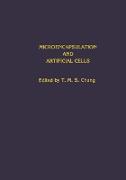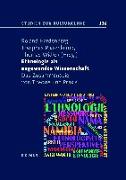- Start
- Microencapsulation and Artificial Cells
Microencapsulation and Artificial Cells
Angebote / Angebote:
Early studies by Pendleton and West (1) in 1932 demonstrated that urea moved from the blood into the small intestine in uremic dogs. In 1946, Twiss and Kolff (2) showed in uremic patients that urea could be removed when an isotonic solution was perfused through an isolated in testinalloop. Since these early studies had demonstrated the presence of urea and its removal from the gastrointestinal tract, Yatzidis (3) in 1964 investigated the use of activated charcoal for the removal of uremic wastes from the intestinal tract. In addition to Yatzidis' studies with char coal, other investigations with charcoal have been unable to confirm any significant reduction in serum levels of urea, creatinine, uric acid, or guanidines (4, 5) via this approach. At the same time that Yatzidis proposed the use of charcoal for re moval of nitrogenous wastes from the intestinal tract, he also proposed using charcoal in a hemoperfusion microapparatus as an effective artifi cial kidney. However, clinical studies performed with the Yatzidis char coal artificial kidney showed an adverse affect on platelets and the re lease of embolizing particles (6, 7). To overcome these platelet and emboli problems, Chang's group (8) proposed the general idea of "artificial cells, " Le., microcapsules con taining adsorbents. Since the charcoal particles were now encased within blood compatible membranes, they could not leave the microcapsules to cause embolism, and platelets did not now come in direct contact with the charcoal. In their early clinical hemoperfusion studies, Chang et al.
Folgt in ca. 5 Arbeitstagen




